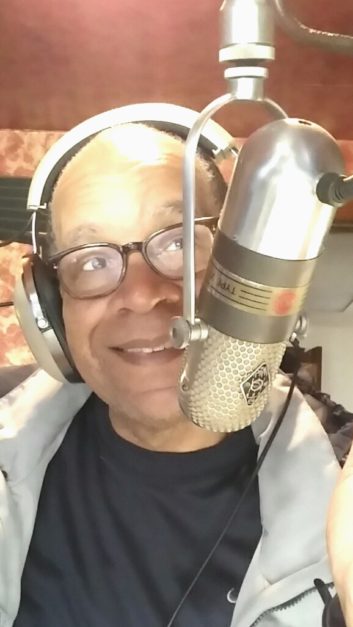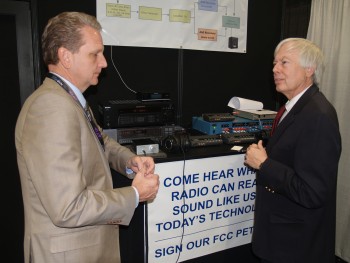
The author is owner and chief engineer of WGTO and W246DV in Cassopolis, Mich. His commentaries are a recurring feature at radioworld.com.
Reprinted here with written permission from the author.
I have written in recent years about AM quality, including modulation and bandwidth. There have been several articles from many other experienced and qualified engineers as well.
Today, I want to ask a few questions and set the stage for answers that seem to have evaded us for more than three decades.
A brief history
AM radios were at one time rather broad in their front-end response. And while that sounded pleasant, that broad front end caused trouble as the band became packed with more stations. The typical receiver delivered degraded audio, as its wide front end let in adjacent signals that made listening less enjoyable, especially at considerable distances.
The problem was exacerbated by AM stations running boosted high-frequency audio at full unrestricted bandwidth, as the audio demanded.
As a response, manufacturers tightened up the I.F so the audio output was less affected by adjacent-station high-frequency modulation. We then saw years of tit for tat. Denser modulation with high-frequency boost was met with more narrowed response by radio manufacturers.
The battle went on, until AM sounded more like telephone audio, than a quality audio service.
In the 1980s, the National Radio Systems Committee set out the honorable goal of standardizing transmission equalization, with pre-emphasis that was matched by complimentary de-emphasis in receivers. The goal was a much improved end-to-end listening experience, one that could approach the sound of FM in new radios.
The FCC adopted the transmission pre-emphasis, along with a bandwidth limit, or mask, for modulating audio with a cutoff that was as sharp as the edge of the Grand Canyon, blocking anything over 10kHz from making it onto the air.
Receiver manufacturers said they would soon open the front ends of typical cars and home radios once the new pre-emphasis and cutoff were adopted.
Fact is the mask cutoff worked so well that you could sit five miles from a 50kW station and tune to a 1kW first-adjacent 80 miles away and hear it with no interference from the nearby flamethrower on just about any modern car radio. For the casual listener on a consumer radio, the days of adjacent interference were over.
The present
It has been more than 30 years since that agreement was made at the NRSC table, more than a generation since the plan was drawn up.
We have gone through many phases since then -- C-QuAM stereo, which died. AM hybrid digital, which frankly sucked. And now finally a move to go all-digital.
But we know that analog radios will be around for years to come. Most of the senior engineers from the manufacturers, who were working in the 1980's, have long since passed away. But the standards that were supposed to change never did.
I often wonder why the NRSC or NAB could not twist some arms, and why the FCC left the room when asked to mandate the new receiver standards; but that is another story.
AM portable and most car radios still have audio response that rolls off like a ski slope after 2kHz. But every station in the United States and some other areas have adopted the 10kHz cutoff.
The question and challenge
A lot of people read Radio World, so I am looking for someone to answer the question in technical detail of why, after all these years and tests, the standard AM radio is still unnecessarily narrow and bad-sounding.
I want someone with credentials as a manufacturer to step up and tell us what possible reason they have for not re-doing the basic chipset in 30 years to accommodate the NRSC standard.
The argument has gone on for decades, but I have never seen a written word from any trade group or individual representing radio manufacturers that really explains this position.
Manufacturers promised the NRSC they would make radios to compliment the new standard, even though the FCC never made the receiver improvement mandatory, while making every radio station modify transmission systems to meet the new standard.
Makers did respond quickly to the expanded band, cranking out radios that went to 1700kHz at record speed; and now they are slowly making digital radios for more car models. But no one took the simple step of changing the mass-produced chipsets to something that would better resemble decent fidelity since 1988.
Someone tell me why improvements were not made to increase bandwidth to any reasonable degree. Is there a political answer? I cannot think of an engineering answer, but I wish to open the floor for someone to stand up to explain this archaic practice of tightly limited AM bandwidth -- at a time when most AM listening is local, and adjacent interference at that range is rare. Is there anyone from the manufacturing side who will offer testimony? Is there someone to come forward or will we hear only country crickets in the night?
KINTRONIC LABORATORIES DEMONSTRATES C-QuAM AM STEREO AT THE NAB 2014 SPRING SHOW

Bobby Cox and Tom King from Kintronic Laboratories showed their fondness for C-QuAM AM stereo by proclaiming "Come hear what AM Radio can really sound like using today's technology." They also answered questions in their booth at the National Association of Broadcasters Spring 2014 show, and discussed C-QuAM AM stereo technology and the FCC petition that they organized to improve the AM broadcast band. Anyone willing to listen to high fidelity AM audio was greeted with a pair of headphones for a shoot-out test. Both the Carver TX-11a and Sony XDR-F1HD tuners definitely showed the disparate differences in AM tuner audio bandwidth and distortion in these headphones. Alan Alsobrook and The Broadcasters' Desktop Resource reported on the NAB festivities.
Tom King wrote letter to the Federal Communications Commission (FCC) on September 04, 2014 regarding the AM Revitalization process (FCC NPRM Docket No. 13-249):
Subject: Meeting with FCC Commissioner Ajit Pai and Mr. Peter Doyle,
Chief of the Audio Division of the FCC Media Bureau
at the offices of the FCC in Washington, DC on Tuesday, September 23, 2014.
To All AM Broadcasters in the USA:
Kintronic Labs is concerned about the declining position of the AM radio service in the United States, which we reflected in our Reply Comments to the FCC NPRM Docket No. 13-249 on the subject of "AM Revitalization," issued on October 31, 2013. In the interest of preserving this great national resource for local public media, we have scheduled a meeting with FCC Commissioner Ajit Pai and Audio Media Chief, Mr. Peter Doyle, to address what we believe are the critical steps toward putting AM radio on a more competitive basis with FM as follows:
(1) FCC enforcement of regulations relative to the power distribution industry and the consumer electronics industry that are not currently being enforced, resulting in a constantly worsening electromagnetic environment for AM radio service.
(2) The need for parity between AM and FM receivers through the establishment of minimum technical standards for AM receivers that would become effective as soon as January 2016. We plan to demonstrate a comparison of full-bandwidth C-QuAM AM stereo reception with a local FM station and with a typical AM receiver in a popular consumer multi-band receiver. The effects of adjusting the AM bandwidth from 2.5 to 10 kHz in 2.5-kHz steps will also be demonstrated.
(3) The need for FCC authorization of AM synchronous boosters. Unlike FM translators, such on-channel boosters would serve to increase the AM stations' audiences while concurrently maintaining the future viability of the band. The related technique of wide-area AM synchronization for coverage improvement will also be addressed.
Referring to Step #2, it is absolutely essential that very close to full parity be established for new AM radio receivers versus their FM radio counterparts. This includes all key AM receiver performance attributes, including:
Without fulfillment of the first three requirements (this also includes the associated AM antennas both for vehicles and for home use), basic AM reception will suffer significantly compared with FM. Without the last two, the output sound quality cannot be closely competitive with FM (i.e., 10-kHz full bandwidth on AM versus 15-kHz nominal for FM).
We therefore petition the FCC to mandate the following minimum allowable performance specifications for all AM receivers that will be manufactured and installed in new automobiles as of January 1, 2016:
Audio Bandwidth: 10 kHz typical, adaptive, with a minimum nominal bandwidth of 7.5 kHz
Signal-to-Noise Ratio: minimum 55 dB, preferably 60 dB
Sensitivity: -120 dBm for a signal-to-noise ratio (SNR) of 10 dB
Selectivity: 25-50 dB (adaptive filtering, using co-, adjacent-, and alternate-channel detection)
Dynamic Range: 100 dB
Noise Figure: 1 - 3 dB
Image Rejection: -50 dB
Intermod: IP2 , IP3 intercepts +10 to +40 dBm
IF: low with image-rejecting down-conversion, or double-conversion
Stereo Separation: minimum 25 dB
Respectfully Submitted,
Tom F. King
President
NEW DIGITAL TUNER FOR BROADCAST STATIONS WILL BE MADE AVAILABLE FROM MEDUCI
In 2006, we developed prototype meduci AM stereo tuner for two Chicago AM stations that included the following features:
Our newest tuner has all of the above features, as well as the following additional new features:
Balanced audio outputs with XLR male connectors provide uncompromising audio performance for critical listening applications with compatible audio components.
Each tuner is frequency agile, with drift-free quartz crystal phase lock loop accuracy (down to better than 100 ppm stability). Each tuner is set to the station's frequency, based upon internal DIP switch selection.
Loss-of-carrier signal sense (open collector) is also standard, to interface to user-supplied alarm device. Each tuner can be mounted to standard EIA 19" relay rack. Antenna input is 50 ohm BNC connection. Purchaser can also specify either XLR, Euroblock, or 1/4" TRS audio outputs.
Designed as a general purpose off-air AM medium wave broadcast quality monitor demodulator grade receiver for EAS or other critical applications.
Each tuner will be priced according to market conditions. There is an approximate four-week manufacturing lead time.
Please inquire for further details, and do not forget to mention "AM stereo" (without quotes) in the subject line to bypass our internal junk spam mail filters. Write to amstereo'AT'meduci.com (replace 'AT' with the @ sign).
Or simply scan QR code using your smart phone or mobile device QR Scanner to send an e-mail to meduci:

